Gymnastics Warm Up: Stretches, Exercises, Cardio, and More
Gymnasts - more than most other athletes - require a comprehensive warm-up in order to train safely.
This is on account of the highly demanding and intense nature of their sport, where joints and connective tissue are frequently subjected to high-impact and high stress situations.
While this article is no substitute for actual personal gymnastics coaching, we’ve outlined the basic premise and facets of a proper gymnastic warm-up - with a few suggested exercises to get you started.
How do Gymnasts Warm-Up?
Apart from a basic level of circulatory system work, gymnasts need to target their entire body’s skeletal musculature and connective tissue in order to be properly warmed up.
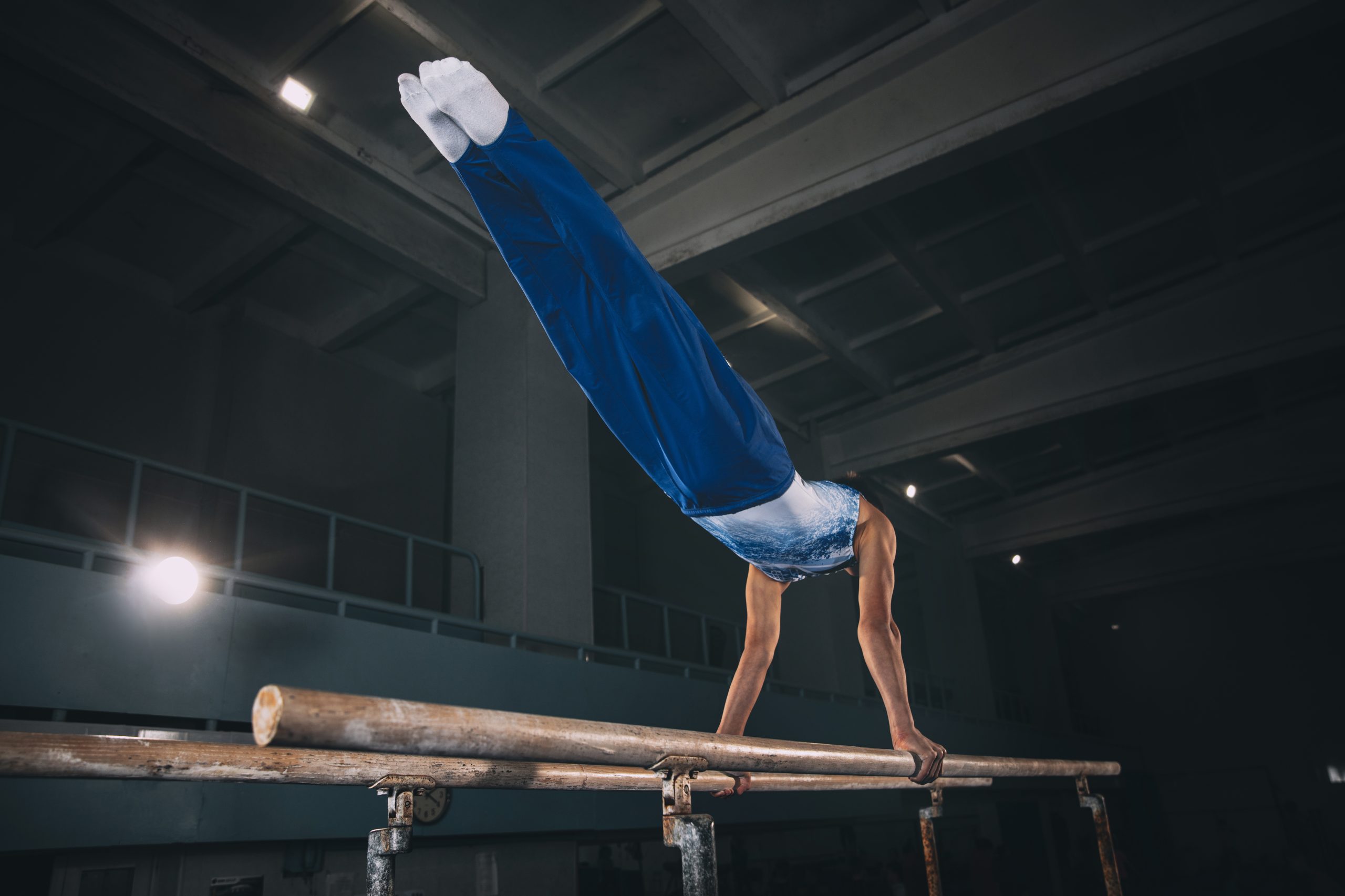
Generally, when speaking of a warm-up, the intention is to stimulate blood flow to an area to be exercised. Alternatively, warming up can also mean pre-activating muscle groups so as to prepare them for intense contraction.
For gymnasts, this means performing a successive list of movements starting with optional static stretches to low intensity resistance exercises meant to prime their most important muscle groups.
Following a proper warm-up is absolutely vital to performing any sort of exercise, as it not only prevents injury but also enhances performance in all aspects of athleticism.
Mobility Exercise Selection for Warm-Ups
As mentioned, gymnasts will need to select a mixture of mobility work targeting their connective tissue alongside exercises that work the right muscle groups.
For joints, the most important are the hips, knees, ankles and shoulder girdle.
These four structures are the most commonly injured by gymnasts, and as such should be mobilized and reinforced as much as possible.
Gymnasts may target these areas individually with dynamic or static stretches that move them through their entire range of motion.
For example, an exercise that moves the knee through a full range from extension to flexion is ideal.
While some clinical data shows that static stretching can be less effective prior to performing exercise, there is also information that counters this statement. It is up to the athlete and their coach to decide whether to include static or dynamic stretches into their pre-workout regime.
Activation Exercise Selection for Warm-Ups
For muscles, a gymnast will need to emphasize those of the legs, core and both the front and back of the upper torso.
Activating these muscle groups will require low-impact low-intensity resistance exercises that stimulate blood flow and conscious nervous system recruitment.
While isometric isolation exercises are the best way to achieve this, doing so can be time consuming and instead selecting compound movements may be easier.
For example, rather than targeting the rhomboids, trapezius and latissimus dorsi individually, performing a static pull-up or towel row for a few reps will suffice.
The exact type of stretches and exercises used to target these areas will depend on personal preference and intended intensity. However, generally, gymnasts will wish to avoid anything exceeding an intensity beyond that of a mild level of exertion.
Structuring Your Gymnastic Warm-Up
Structuring a gymnastic warm-up is actually quite simple. The stretches and exercises selected are performed in order of increasing intensity.
Athletes will begin with the easiest and lowest impact stretches they’ve programmed (generally static stretches), prior to performing more dynamic mobility work and finishing with muscular activation exercises.
A Side Note on Mild Aerobic Exercise as a Warm-Up Tool
Regardless of what anaerobic movements you’ve selected, adding 5-10 minutes of aerobic exercise into a warm-up routine can only provide further benefit. Doing so will not only stimulate blood flow but also prepare the circulatory system for increased oxygen uptake.
Swimming, low-intensity jogging or jumping jacks are a few good choices in this regard.
Static Mobility Work
The following stretches are a few examples of static mobility work meant to target the hips, knees, lower back, shoulders and torso.
Downward Dog Pose
The downward dog pose is a yoga pose meant to target the shoulders, back and the entire posterior chain structure of the lower body. This includes the glutes, hamstrings, calves and the connective tissue of the heel and ankle.
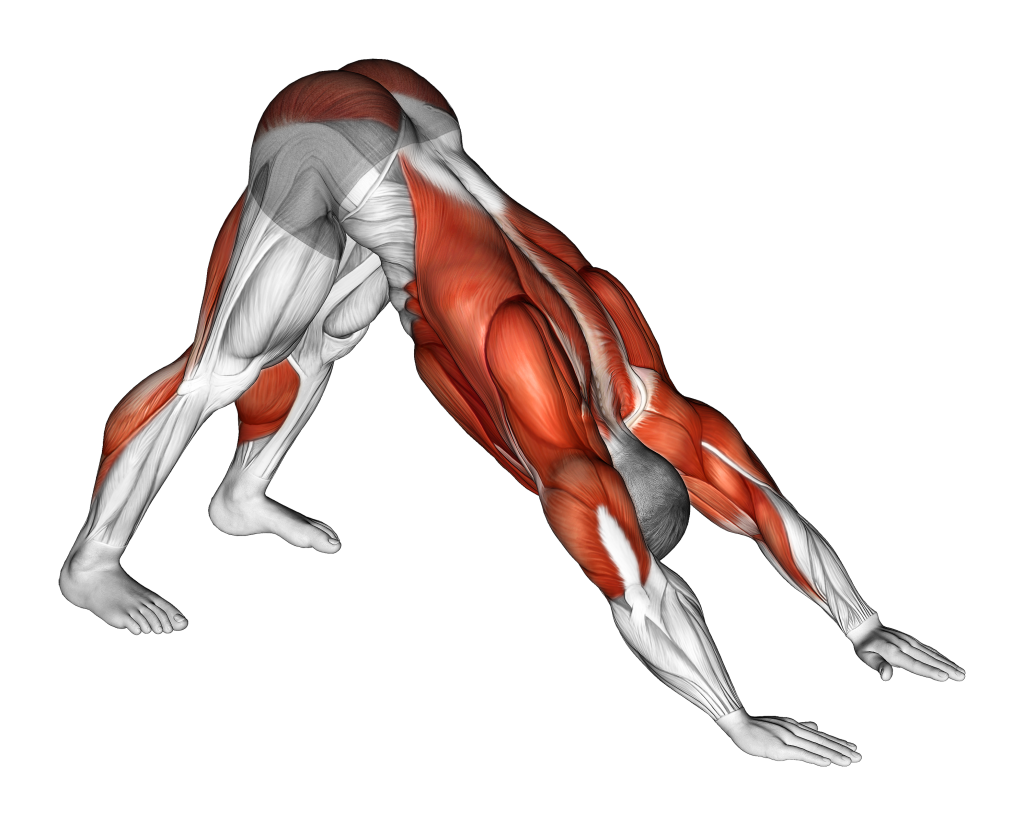
Like other static stretches, the downward dog pose is meant to be held in place at the terminal range for several long moments, rather than for multiple repetitions.
How-to:
From a kneeling stance, the gymnast raises their glutes off the floor as they extend their arms forwards, setting the heels and palms flat on the ground. The hips and glutes should be the highest point of the body, with the back straight and the legs fully extended.
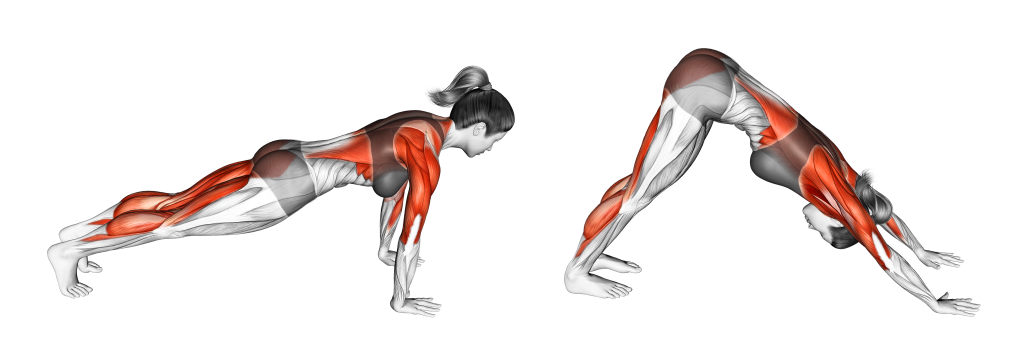
When viewed from the side, the body should form a triangular shape. A stretch should be felt in the upper back, chest and the posterior chain.
The heels may raise off the floor if needed, but gymnasts should seek to minimize this for better heel mobility.
Hold for 15-30 seconds.
Doorway Pectoral Stretch
As can be guessed from its name, the doorway pectoral stretch is performed within a doorway, both arms flat against the threshold with the gymnast stepping forwards.
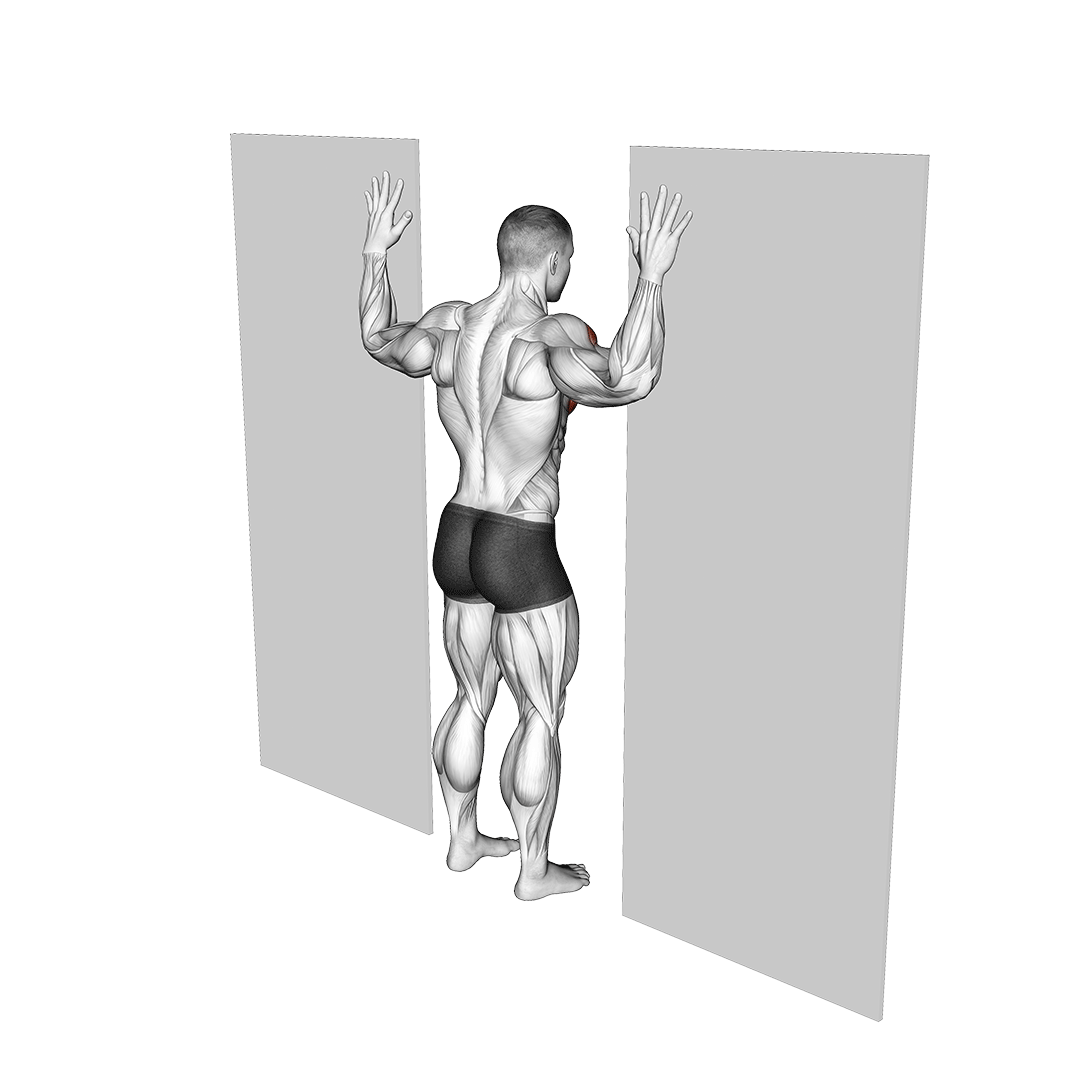
Apart from stretching the pectoral muscles, this exercise also aids in external shoulder rotation, scapular depression and will partially target the biceps as well.
How-to:
Standing facing a doorway, the gymnast sets both hands palms-flat atop the doorway, aligning the rest of their forearms beneath them.
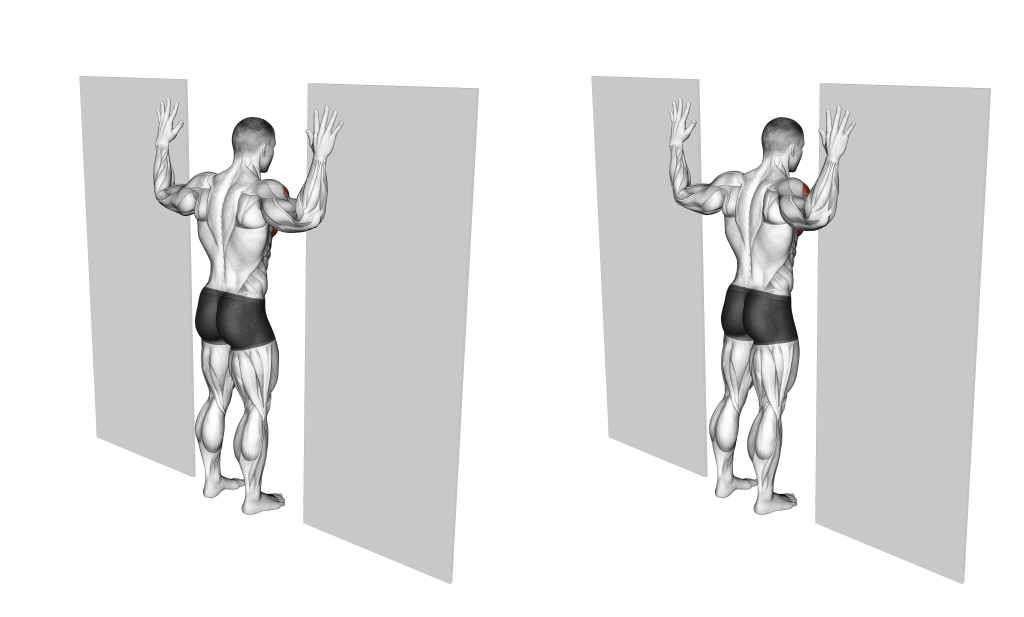
Then, keeping the shoulders loose, the gymnast slowly steps forwards until a stretch is felt along the upper section of the chest.
Hold for up to 30 seconds.
Front Splits Pose
The front splits pose is an advanced yoga pose meant to target the hips, posterior chain and lower back.
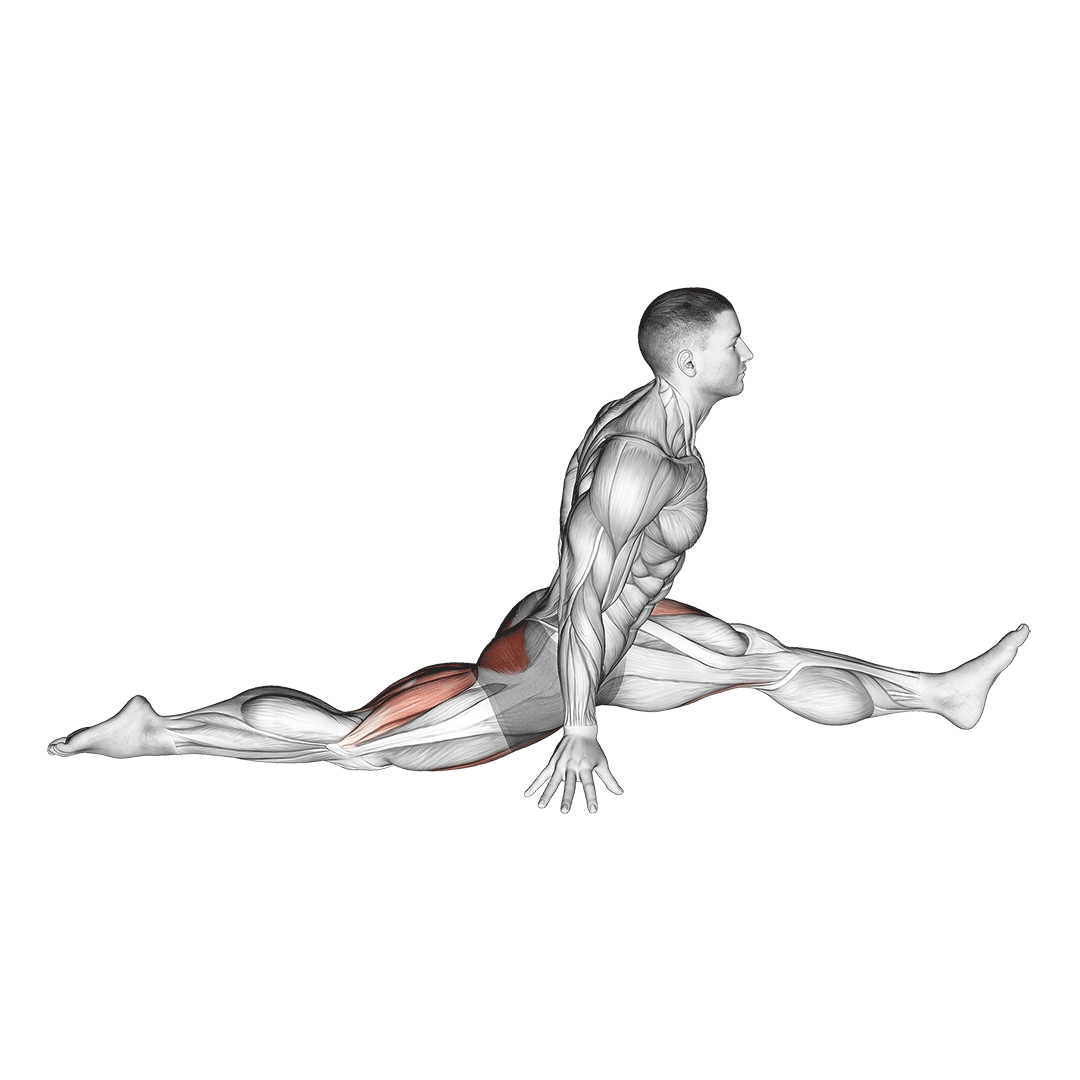
It can be made even more comprehensive by extending the shoulders and arms overhead, allowing it to target nearly every joint in the body simultaneously.
How-to:
To do a front splits pose, the gymnast will sink into a split with one leg extended forwards and the other behind them, keeping the lower back curved according to their mobility as they do so. The chest should remain upright with the toes pointed.
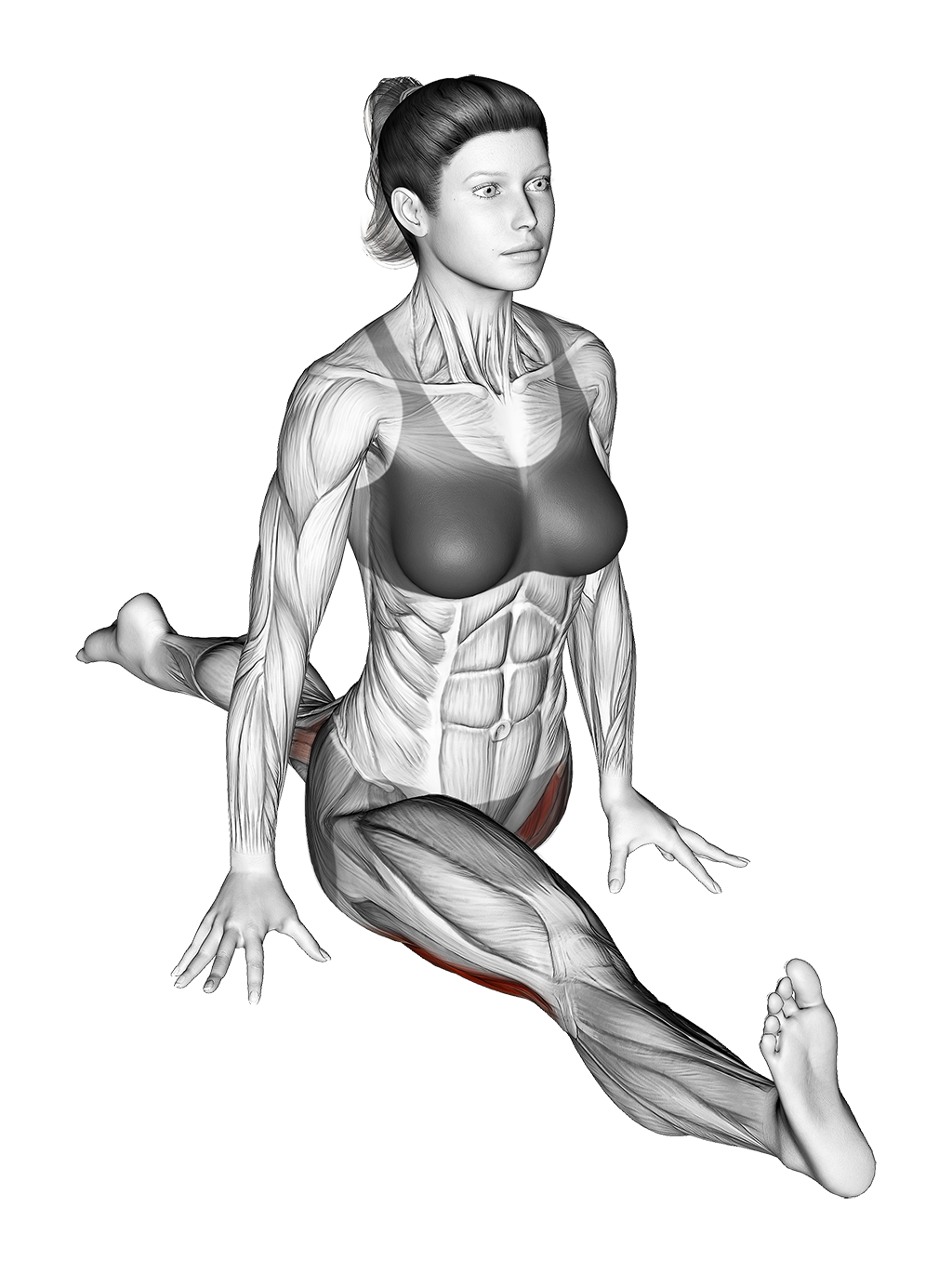
If performing the exercise with the addition of the upper body, the gymnast will also extend their arms upwards while simultaneously shrugging their shoulders.
Hold for up to 30 seconds.
Active/Dynamic Mobility Work
The following are three dynamic mobility exercises meant to target the most at-risk joints of gymnasts.
Arm Circles
A basic drill meant to work the shoulder muscles and rotator cuff, arm circles are exactly as they sound - a full rotation of the arms with the use of the shoulder joint.
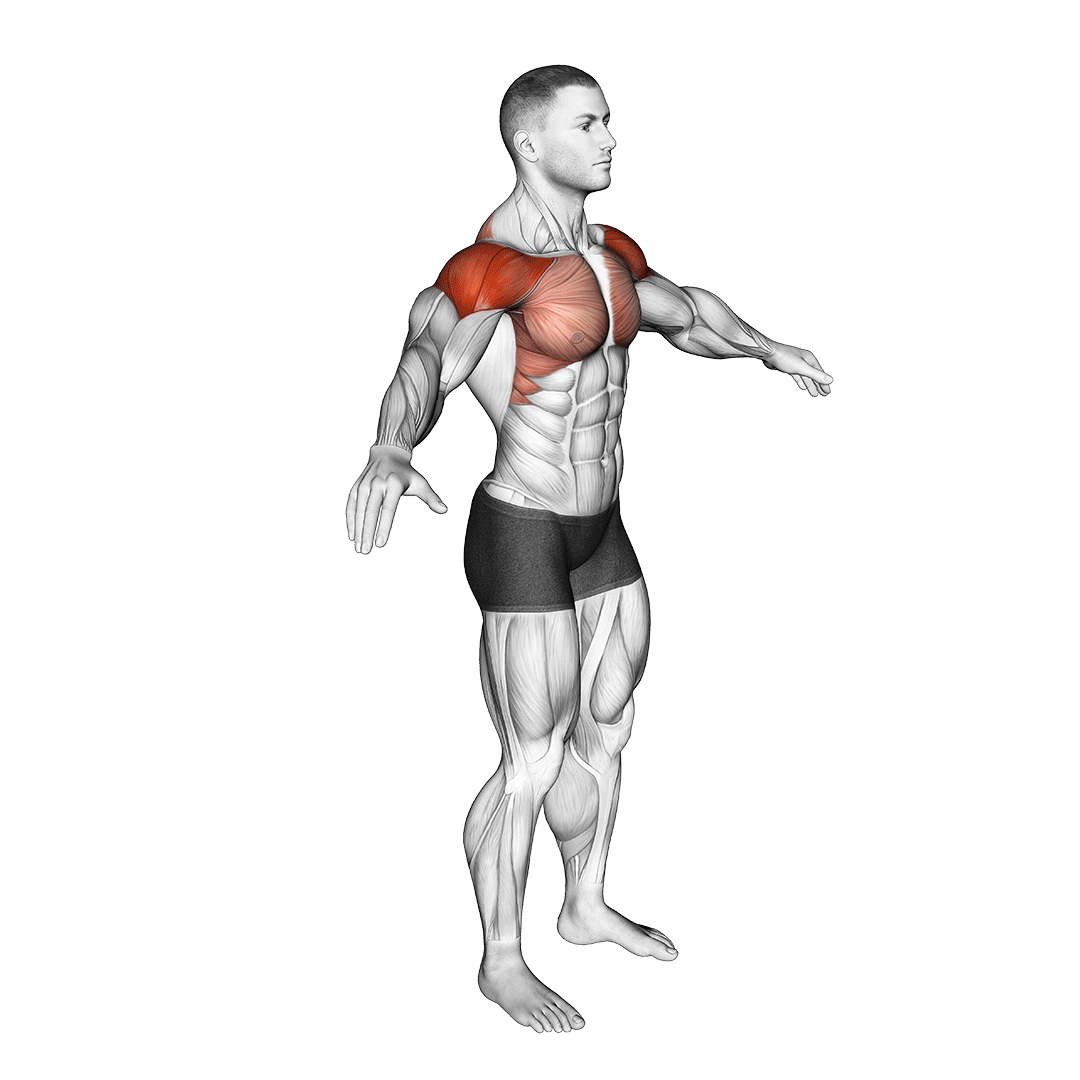
For a more comprehensive warm-up, perform the exercise both clockwise and counterclockwise.
How-to:
Standing upright with the chest pushed out, the gymnast will extend their arms out to the sides and rotate them at the shoulders through a full circle.

The elbows should remain straight as they do this, with the sole moving joint being the shoulders themselves.
Repeat 10-15 times. Perform in the opposite direction if so desired.
Standing Hip Circles
Also a ball-and-socket joint, the hip joint itself can be dynamically mobilized through the use of standing hip circles.
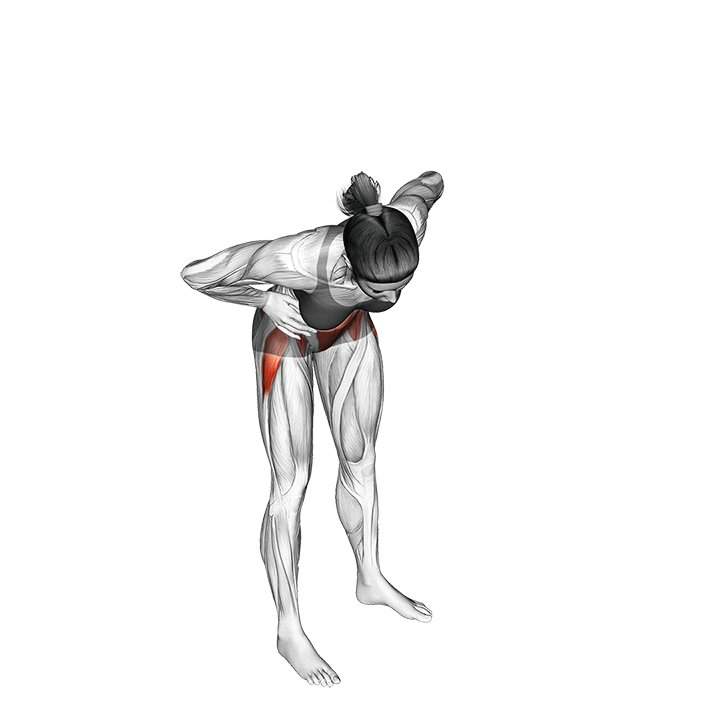
This exercise targets a number of different muscle groups and tissues depending on whether the rotation is outwards or inwards. For the best results, rotate the legs both clockwise and counterclockwise.
Note that this particular movement is separate from the exercise of the same name where the pelvis itself is rotated. Standing hip circles rotate the femur within the hip joint by raising the leg, rather than the entire pelvis.
How-to:
Standing upright with the feet a comfortable distance apart, the gymnast will raise one knee into the air, allowing their foot and shin to dangle.
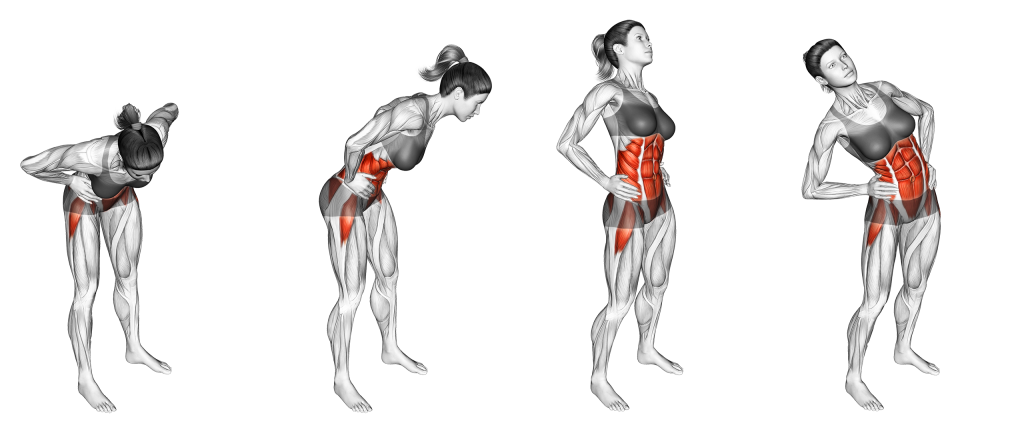
Then, moving at the hip, the gymnast rotates their leg through a full circle, keeping the opposite leg balanced on the ground.
Repeat 10-15 times on each side. Perform the movement rotating in the opposite direction as well.
Leg Swings
Although regular leg swings are more of a pendulum-like action, for a truly comprehensive gymnastic warm-up, it is best to swing the legs through all three axis of its motion.
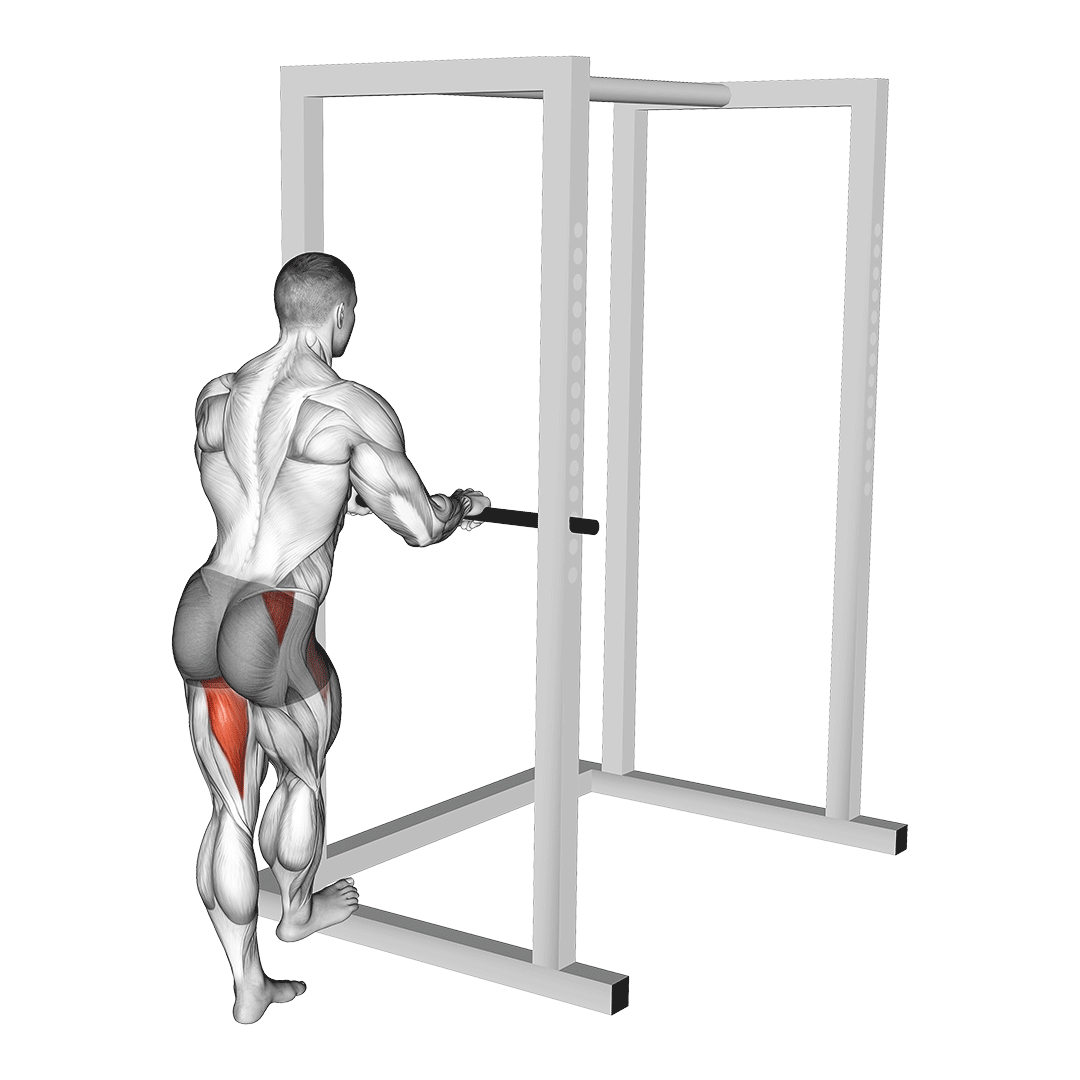
Performing leg swings in this manner means combining both forward-and-back leg swings as well as lateral leg swings. This allows the gymnast to target not only their quadriceps, hamstrings and glutes but also structures in the hips as well.
How-to:
Standing upright with one arm extended for balance, the gymnast will swing their leg forwards with the knee fully extended.
Once reaching the terminal point of their range of motion, they will then reverse the motion and kick their leg behind them, allowing a bend in the knee.
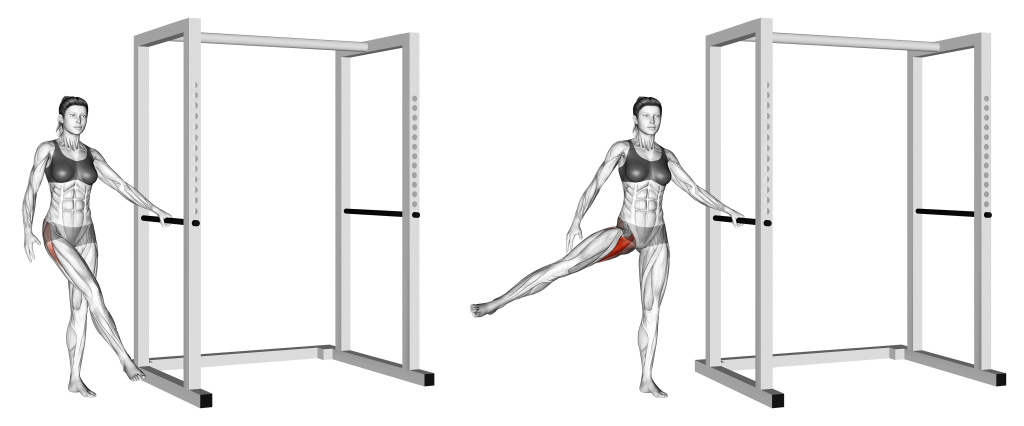
They then return the foot to the ground before swinging it out to the side, keeping the leg loosely extended once more.
Repeat this sequence of movements 10-15 times. Don’t forget to work the other leg as well.
Low-Intensity Muscular Activation Work
The following are a group of low-level resistance exercises meant to prime the muscles of the legs, back, shoulders and chest for gymnastic training.
Remember that these are performed so as to prepare the circulatory, muscular and nervous systems for activity, not to train the muscles. Avoid any intensity beyond the most minor of exertion.
Lunges
Lunges are a classic bodyweight exercise meant to work the quadriceps, glutes, hamstrings and hip flexors in a unilateral manner.
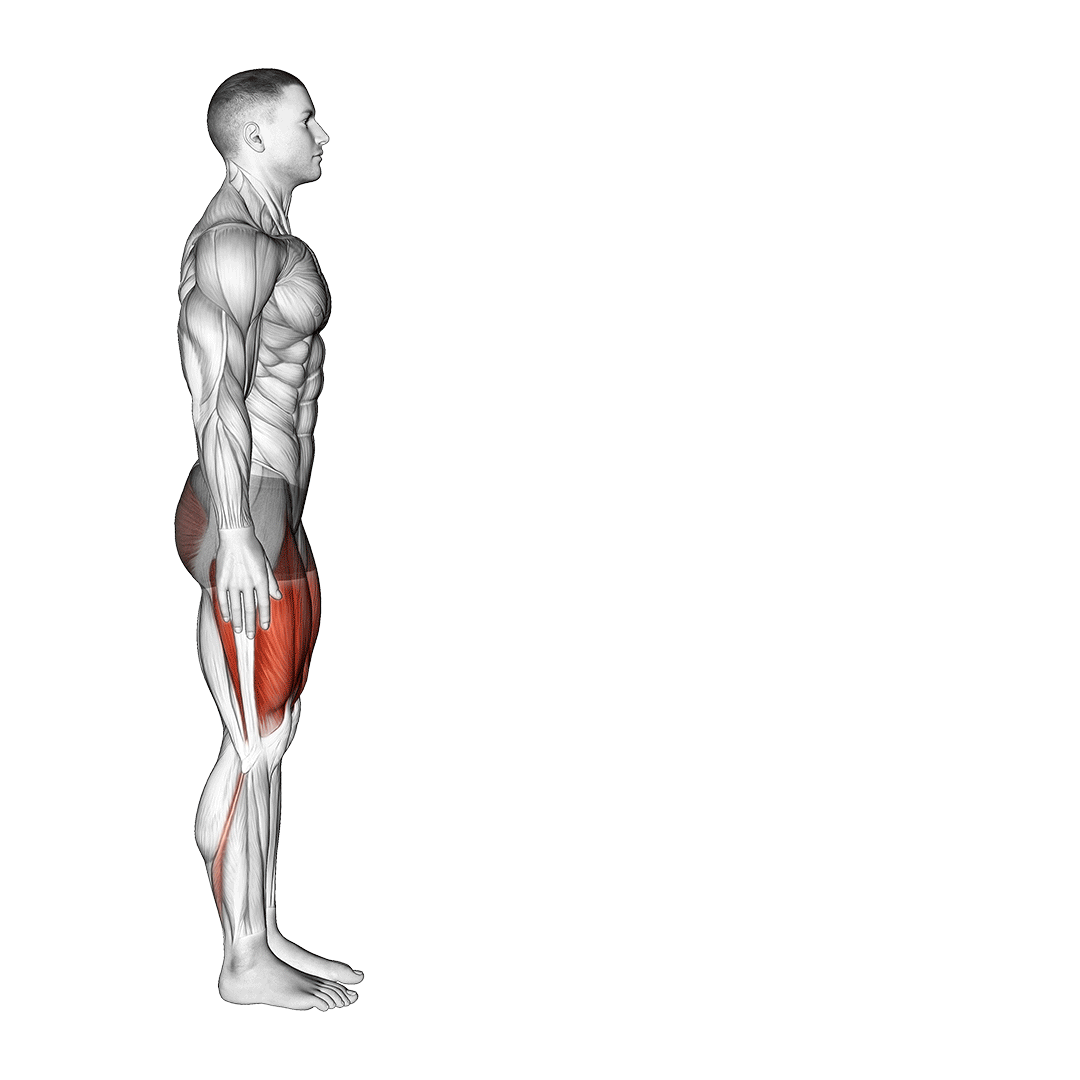
Rather than performing lunges for significant volume or with weight, using them as a warm-up calls for slow and careful repetitions for low volume.
How-to:
Standing upright with the feet set around hip-width apart, the gymnast will take one step forwards, landing on their sole and extending their other leg behind them.
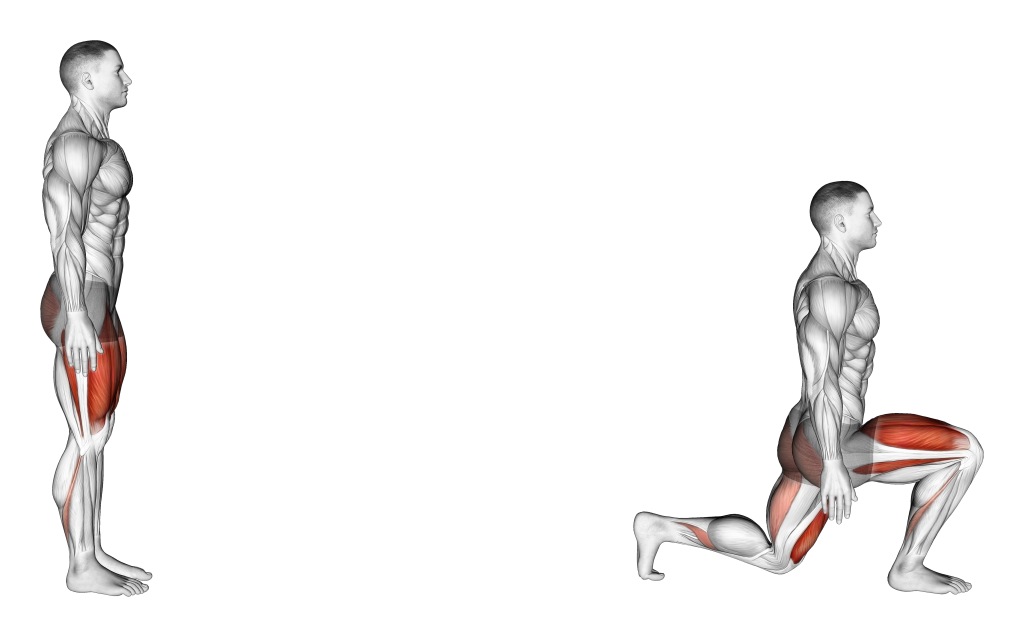
From this stance, they then bend both knees simultaneously until they are in a 90 degree angle of flexion.
Now lowered, the gymnast rises back to a standing position and brings their feet back together.
Repeat with the opposite side. Continue to do so until both sides have been through 3-4 repetitions.
Banded/Towel Pull Aparts
Performed with either a resistance band or long towel, the pull apart is performed so as to target the deltoids and the muscles of the upper back with a low level of intensity.
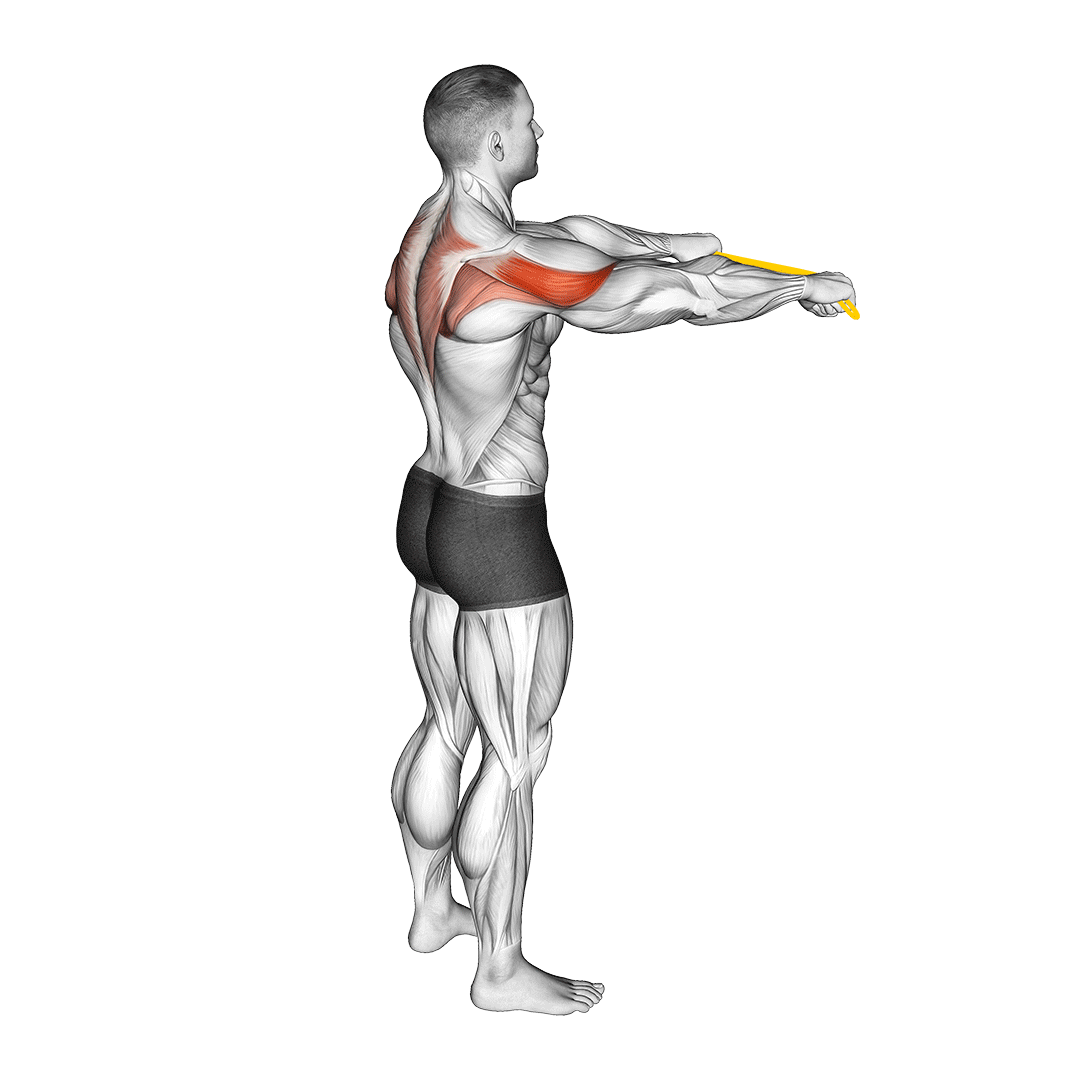
How-to:
To perform a pull apart, the gymnast will stand upright with their hands initially gripping both ends of a towel or resistance band at chest-level, arms extended forwards.
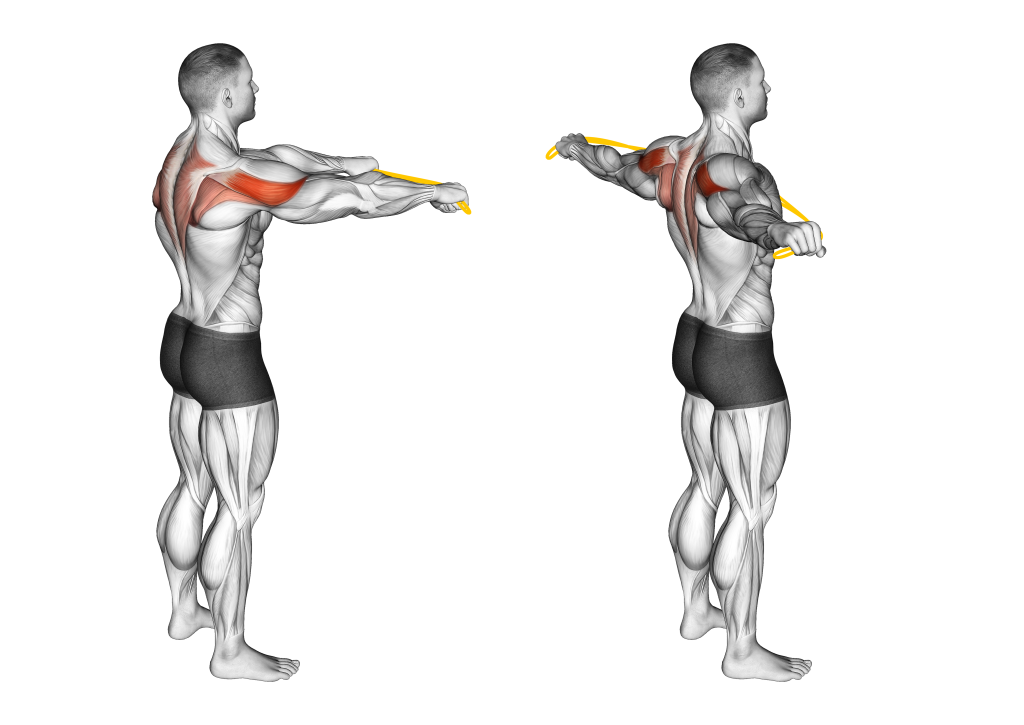
From this stance, they will then pull the towel or band apart, extending their arms out to the sides and rotating their palms downwards as they do so.
Once the arms are parallel to the sides of the torso, the gymnast squeezes their back muscles for greater activation before reversing the movement.
Repeat for 3-4 reps.
Isometric Chest Squeeze
The isometric chest squeeze is a static exercise that activates the pectorals, triceps brachii and anterior deltoids in a zero-impact manner.
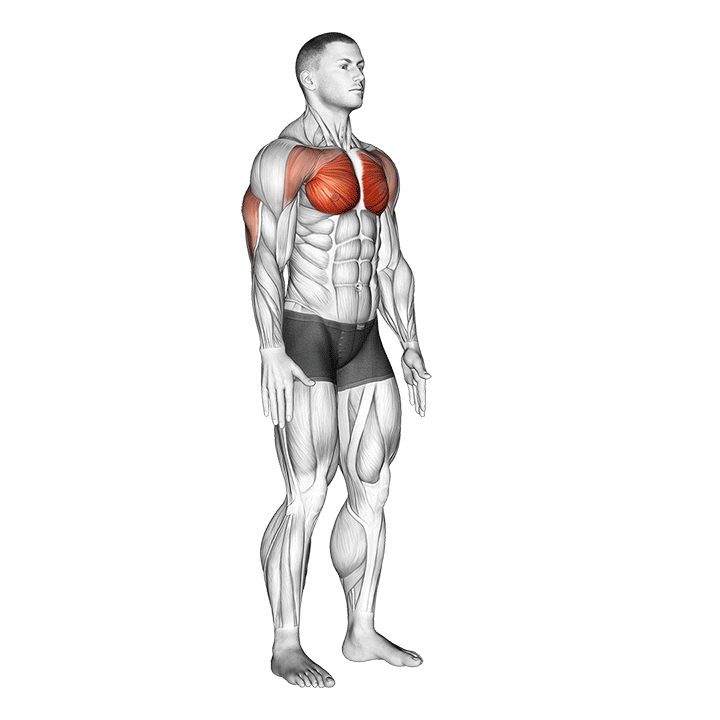
How-to:
To do an isometric chest squeeze, the gymnast will stand upright with their hands pressed together at chest-height, elbows pointing to the sides. The scapula should be depressed throughout the hold.
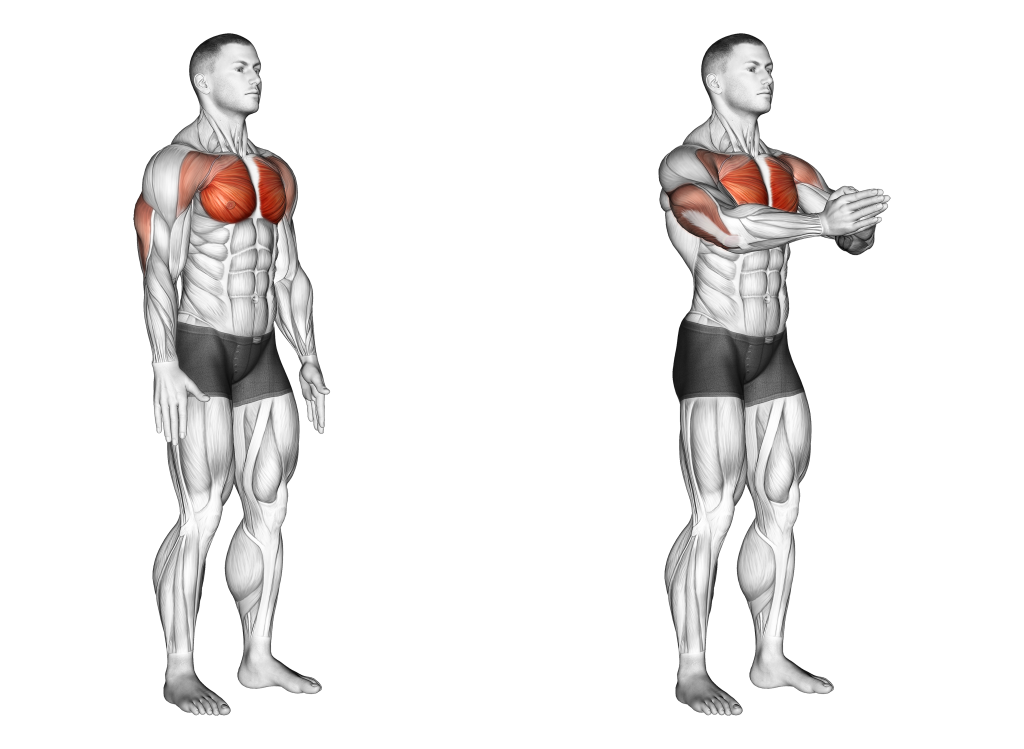
With the palms flat against each other, the gymnast squeezes their pectoral muscles and presses their palms together with a constant level of tension. Contraction should be felt in the triceps, chest and the front of the shoulders.
Hold for 5-10 seconds. Repeat 2-3 times.
Frequently Asked Questions (FAQ)
What Stretches Do Gymnasts Do?
Gymnasts will usually perform a mixture of static and dynamic stretches targeting the hamstrings, glutes, hip flexors and shoulders.
Of course, for the best results, all the skeletal muscles and major joints of the body should be stretched.
What Should I Do Before Gymnastics?
Prior to training for (or participating) in gymnastics, it is important to follow a proper warm-up routine.
This consists of a short bout of aerobic exercise, targeted stretches that prepare the soft tissue and low level exercises that prime the most important skeletal muscle groups.
When is the Best Time to Stretch for Gymnastics?
Ideally, you’ll be performing dynamic stretches several minutes prior to engaging in gymnastics. Passive stretches are most often performed after a session of exercise, or hours beforehand.
Final Thoughts
As important as a warm-up is in gymnastics, don’t forget to ensure you are also following proper form with each performance. Follow the advice of your coach to the letter.
Remember that the stretches and exercises listed in this article are only suggestions. It is entirely possible to swap them out with more difficult or easier alternatives, if needed.
References
1. Peaks, 14. Stretching Your Limits III: Gymnastics Stretching: Build Strength and Flexibility for Powerful Gymnastics. N.p.: CreateSpace Independent Publishing Platform, 2018. ISBN: 9781719180757, 171918075X
2. Donti, Olyvia, Vasiliki Gaspari, Kostantina Papia, Ioli Panidi, Anastasia Donti, and Gregory C. Bogdanis. 2020. "Acute Effects of Intermittent and Continuous Static Stretching on Hip Flexion Angle in Athletes with Varying Flexibility Training Background" Sports 8, no. 3: 28. https://doi.org/10.3390/sports8030028
3. Anderson, Jack. (2019). An Examination and Comparison of the Current Warm-Up Procedures in Scottish Gymnastics. 10.13140/RG.2.2.27568.07687.
